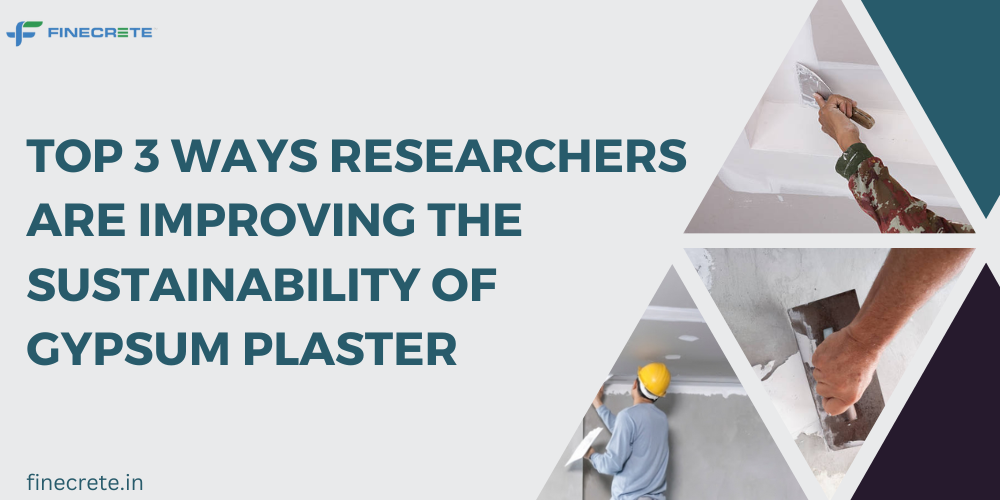Gypsum plaster has been a popular construction material for centuries due to its advantageous properties like excellent workability, resistance to humidity, and quick hardening. However, it also possesses certain limitations, including a lack of toughness, fragility, and poor performance against water, leading to quick degradation. Recognizing these challenges, researchers have dedicated their efforts over the past few years to enhancing the properties of gypsum plaster.
Know about the top three ways researchers are advancing the sustainability of gypsum plaster sourced from gypsum plaster suppliers in Delhi.
- Incorporating Recycled Materials:
In recent times, researchers have been exploring the utilization of construction waste and industrial by-products to replace a portion of the raw materials used in gypsum plaster. By doing so, they aim to reduce the demand for virgin resources and mitigate the environmental burden associated with gypsum production.
Various waste materials, such as fly ash from power plants, slag from steel manufacturing, and recycled gypsum from construction and demolition waste, have shown promise as potential replacements.
These recycled materials not only enhance the sustainability of gypsum plaster but also contribute to waste reduction and resource conservation.
- Enhancing Water Resistance:
One significant drawback of traditional gypsum plaster is its vulnerability to water damage, leading to rapid degradation. To address this issue, researchers have been developing innovative additives and formulations to improve the water-resistance of gypsum plaster.
By incorporating hydrophobic compounds or modifying the chemical structure, gypsum plaster manufacturers in Delhi have achieved notable advancements in enhancing its durability and reducing water absorption.
These improvements not only extend the lifespan of gypsum plaster but also contribute to the sustainability of buildings by minimizing repair and maintenance requirements.
- Investigating Novel Manufacturing Techniques:
Apart from the composition of gypsum plaster, researchers are also exploring novel manufacturing techniques to improve its sustainability. By optimizing the production process, they aim to reduce energy consumption and minimize carbon emissions associated with gypsum manufacturing.
For instance, researchers have investigated alternative calcination methods, such as using microwave or infrared heating, to enhance energy efficiency.
Additionally, the utilization of 3D printing technology has shown promise in reducing material waste during the construction phase and enabling complex geometries that optimize resource utilization.
Conclusion
Researchers have made substantial progress in addressing the limitations of gypsum plaster. These advancements not only contribute to the long-term durability and performance of buildings but also align with the global objective of promoting sustainable construction practices. As researchers continue to innovate and collaborate, we can look forward to a more sustainable future for gypsum plaster, benefiting both the construction industry and the environment.






